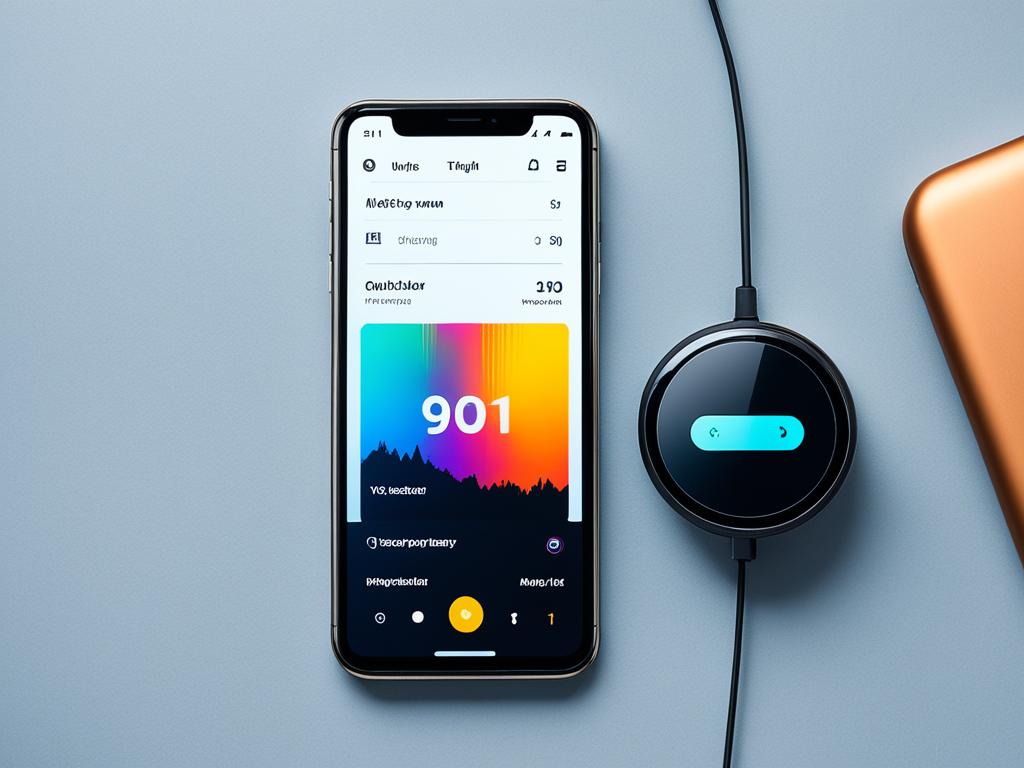Welcome to the exciting world of digital music, where technology has transformed the way we listen to and enjoy our favorite tunes. In this article, we’ll take you on a journey through the evolution of digital music, starting from the rise of MP3s as a popular format for music consumption, to the emergence of streaming services that have revolutionized the industry. So get ready to dive into the fascinating world of digital music and discover how it has changed the way we experience music.
Key Takeaways:
- Digital music has undergone a remarkable transformation, from the dominance of MP3s to the rise of streaming services.
- Streaming services have democratized music, making it more accessible to a wider audience and empowering independent artists.
- The music streaming business model faces challenges such as royalty payments and piracy, but has also seen successes through innovations like curated playlists and algorithmic recommendations.
- The evolution of digital music is an ongoing process, with exciting potential future developments in store.
A History of Music Consumption
Music has always been a fundamental part of human culture, evolving alongside technological advancements that shaped the way we listen to and acquire music. In this section, we will explore the fascinating history of music consumption, from its early forms to the digital revolution that transformed the landscape of the industry.
In the early days, music was primarily consumed through live performances or physical formats like vinyl records, cassette tapes, and CDs. These formats allowed music enthusiasts to enjoy their favorite songs at home or on the go. However, the introduction of digital music marked a significant turning point in the way we consumed and accessed music.
The digital music revolution began with the rise of MP3s, a popular audio file format that offered high-quality sound in a compressed size. MP3s allowed users to store and share music files easily, paving the way for the widespread availability of digital music. The emergence of file-sharing platforms and peer-to-peer networks further accelerated the adoption of digital music, enabling users to exchange songs with ease.
“The introduction of MP3s revolutionized the way individuals consumed music, giving them the ability to carry thousands of songs in their pockets.”
As technology continued to advance, so did the ways in which music was consumed. With the advent of high-speed internet connections, music streaming services entered the scene, offering users instant access to an extensive library of songs. Streaming platforms like Spotify, Apple Music, and Pandora allowed listeners to discover new music, create personalized playlists, and enjoy their favorite tunes on-demand.
The convenience and affordability of streaming services led to a significant shift in music consumption habits. Users embraced the freedom of streaming, transitioning from owning physical copies of albums to accessing a vast catalog of songs with just a few clicks.
Today, music consumption continues to evolve, with digital music becoming the primary mode of listening for many. The availability of subscription-based streaming services and the rise of mobile devices has made music more accessible than ever before. The convenience and flexibility of digital music platforms have transformed the way we discover, enjoy, and share music.
The Impact of the Digital Music Revolution
The digital music revolution has had a profound impact on the music industry as a whole. It has democratized the distribution of music, allowing independent artists to reach global audiences and gain recognition without the need for major label support. The ease of self-publishing and online distribution platforms has empowered musicians to showcase their talent and connect with fans directly.
Additionally, the digital music revolution has challenged traditional revenue models in the industry. With the rise of streaming services, artists and record labels face new challenges in monetizing their music. Royalty rates and fair compensation for artists have been subjects of debate and negotiation, as streaming has become the dominant mode of music consumption.
In conclusion, the history of music consumption showcases the transformative power of technology in shaping the way we listen to and engage with music. From the early days of vinyl records to the digital music revolution, one thing remains constant: our love for music and the desire to discover and connect with it. The evolution of music consumption is an ongoing journey, with digital platforms continuously redefining the way we experience the art and joy of music.
Streaming Services and the Democratization of Music
In recent years, streaming services have emerged as a game-changer in the music industry, paving the way for the democratization of music. These platforms have revolutionized how we discover, consume, and share music, making it more accessible to a wider audience than ever before.
Streaming services such as Spotify, Apple Music, and Amazon Music have disrupted traditional music distribution models, dismantling barriers to entry and democratizing the industry. With just a few clicks, music lovers around the world can access millions of songs, albums, and playlists, all at their fingertips.
One of the key ways in which streaming services have democratized music is by leveling the playing field for independent artists. In the past, these artists often faced challenges in getting their music heard due to limited resources and distribution channels. However, with the rise of streaming services, independent musicians now have the opportunity to reach global audiences without relying on record labels or extensive marketing budgets.
The democratization of music through streaming services has also opened doors for niche genres and underrepresented artists. Previously, mainstream radio stations and record labels had a significant influence on what music reached the masses. However, with algorithms and personalized recommendations, streaming platforms enable users to discover a diverse range of artists and genres that may not have received as much exposure through traditional channels.
The impact of streaming services on the music industry extends beyond accessibility. These platforms have also transformed the music streaming business model. Rather than relying solely on album sales or digital downloads, streaming services generate revenue through subscriptions and advertising. This shift has prompted artists and labels to adapt their strategies, focusing on generating streams and building a dedicated fan base.
While streaming services have undoubtedly democratized music and provided unique opportunities for artists and listeners alike, they also face challenges. The royalty payment structure has been a point of contention, with some artists arguing that the current system does not adequately compensate musicians. Additionally, streaming services must navigate the issues of competition, piracy, and maintaining a sustainable business model in a rapidly evolving digital landscape.
Nevertheless, the democratization of music through streaming services has had a profound impact on the industry, allowing artists to connect directly with fans and listeners to discover a world of music at their convenience. As this transformation continues, we can reflect on the impact of streaming services and anticipate further advancements that will shape the future of music consumption.
The Business Model of Music Streaming: Challenges and Successes
As the popularity of music streaming continues to grow, let’s delve into the intricacies of its business model. Music streaming has revolutionized the way we consume music, providing easy access to millions of songs with just a few clicks. However, along with its successes, the industry also faces a range of challenges.
Challenges of Music Streaming
One of the major challenges in the music streaming business model is the issue of royalty payments. Streaming platforms need to negotiate fair licensing agreements with record labels, artists, and songwriters to ensure that they receive proper compensation for their work. This can sometimes be a complex process, involving multiple stakeholders and varying royalty rates, leading to disputes and legal battles.
Competition is another significant challenge in the music streaming landscape. With numerous streaming platforms vying for users’ attention and subscription dollars, companies must continually innovate, differentiate their offerings, and secure exclusive content deals to attract and retain users. This fierce competition can require substantial investments in marketing, technology, and partnerships.
Piracy remains a persistent challenge in the music streaming industry. Despite efforts to combat illegal downloading and streaming, unauthorized platforms and file-sharing networks still exist. These platforms not only infringe upon copyright holders’ rights but also divert potential revenue from legitimate streaming services. The fight against piracy requires ongoing collaborations between streaming platforms, artists, and industry organizations to protect intellectual property and ensure a fair and sustainable music ecosystem.
Successes of Music Streaming
Amidst these challenges, music streaming has achieved remarkable successes. The industry’s revenue has been steadily growing, with streaming now accounting for the majority of music industry revenues worldwide. Streaming has democratized the access to music, allowing users to discover and enjoy a vast catalog of artists and genres from around the globe.
Curated playlists and algorithmic recommendations have been pivotal in creating personalized music experiences for users. Streaming platforms have leveraged data analytics and machine learning algorithms to offer tailored music suggestions based on users’ listening habits and preferences. This has enhanced user engagement and discovery, enabling artists to reach new audiences and increase their visibility.
Furthermore, music streaming platforms provide valuable promotional opportunities for both established and independent artists. Through playlist placements, featured artist spotlights, and algorithmic exposure, streaming services have become powerful marketing tools. This has enabled emerging artists to gain recognition and grow their fan base, while established artists can reach a global audience without relying solely on traditional radio airplay or physical album sales.
In conclusion, the music streaming business model presents a mix of challenges and successes. While royalty payments, competition, and piracy pose ongoing hurdles, the industry’s growth and innovation demonstrate its resilience and transformative power. By addressing these challenges and building upon the successes, music streaming can continue to revolutionize the way we consume and discover music.
Conclusion
Throughout this article, we have explored the evolution of digital music, from the days of MP3s to the introduction of streaming services. It is evident that digital music has transformed the way we consume and interact with music, revolutionizing the entire industry.
Streaming services have played a significant role in this transformation, providing a convenient and accessible platform for music lovers to discover, stream, and share their favorite songs. These platforms have democratized music by giving independent artists a global reach and enabling listeners to explore a vast library of tracks from different genres.
The business model of music streaming has not been without challenges, including navigating royalty payments and combating piracy. However, streaming services have continued to innovate, offering curated playlists, personalized recommendations, and unique opportunities for artists to promote their music.
In conclusion, digital music and streaming services have had a profound impact on the music industry, opening up new possibilities and avenues for artists and listeners alike. As technology continues to advance, we can expect further evolution and exciting developments in the world of digital music. Embracing these changes and staying tuned to the dynamic landscape of streaming services will undoubtedly shape the future of music.







